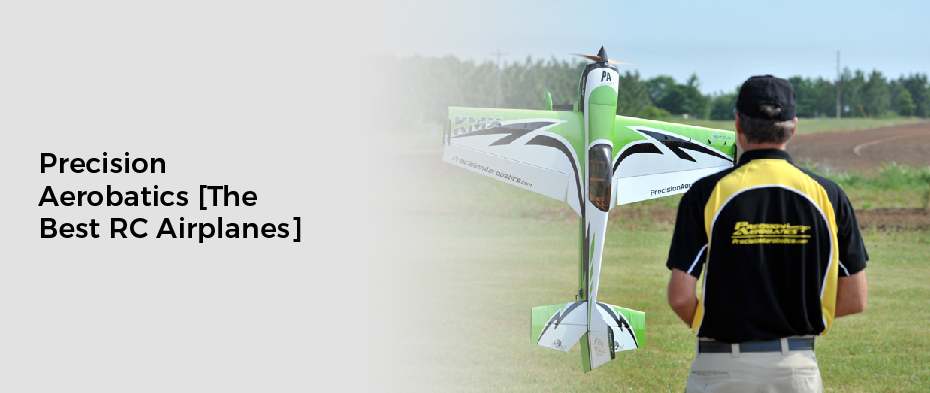Non-Renewable Resource Use
Plastic bags are made from petroleum, a non-renewable resource. The production process involves extracting and refining oil, contributing to environmental degradation and greenhouse gas emissions. The Environmental Protection Agency (EPA) reports that reducing plastic bag use can help conserve these valuable resources.
Examples of Non-Renewable Resource Use
Non-renewable resources are natural resources that cannot be replenished within a human lifespan. These resources are finite and include fossil fuels like coal, oil, and natural gas, as well as minerals like uranium. Their extraction and use have significant environmental impacts. Here are some detailed examples of non-renewable resource use:
1. Fossil Fuels
Coal
Description:
Coal is used primarily for electricity generation and steel production. It is mined from underground or surface mines.
Impact:
Coal mining and combustion release significant amounts of carbon dioxide (CO2) and other pollutants, contributing to air pollution and climate change. The Environmental Protection Agency (EPA) reports that coal-fired power plants are a major source of CO2 emissions.
Example:
The United States relies heavily on coal for electricity, with coal power plants supplying about 20% of the country's electricity. This contributes to high levels of greenhouse gas emissions and air pollutants.
Oil
Description:
Oil is used for transportation fuels, heating, and the production of plastics and chemicals. It is extracted through drilling wells on land or offshore.
Impact:
Oil extraction and refining processes can lead to oil spills, habitat destruction, and water contamination. Burning oil for fuel releases CO2 and other pollutants. The National Oceanic and Atmospheric Administration (NOAA) highlights the environmental damage caused by oil spills, such as the Deepwater Horizon spill in 2010.
Example:
The transportation sector in the United States is the largest consumer of oil, using it to power cars, trucks, and airplanes. This sector accounts for nearly 30% of the country's greenhouse gas emissions, according to the U.S. Energy Information Administration (EIA).
Natural Gas
Description:
Natural gas is used for electricity generation, heating, and as a feedstock for chemical production. It is extracted through drilling and hydraulic fracturing (fracking).
Impact:
Although natural gas burns cleaner than coal and oil, its extraction process, especially fracking, can cause water contamination and release methane, a potent greenhouse gas. The International Energy Agency (IEA) reports that methane leaks from natural gas infrastructure contribute significantly to global warming.
Example:
Natural gas powers over 30% of electricity generation in the United States, making it a critical energy source. However, the methane emissions from natural gas infrastructure pose a significant environmental challenge.
2. Nuclear Energy
Uranium
Description:
Uranium is used as fuel for nuclear power plants. It is mined and then processed into fuel rods for nuclear reactors.
Impact:
Uranium mining and processing generate radioactive waste, which poses long-term environmental and health risks. Additionally, nuclear power plants produce radioactive waste that must be carefully managed and stored. The World Nuclear Association emphasizes the need for secure storage solutions for radioactive waste.
Example:
The Chornobyl disaster in 1986 is a stark example of the potential dangers of nuclear energy. The accident released large amounts of radioactive material into the environment, leading to long-term health and environmental consequences.
3. Minerals
For more information, please visit our website at: https://solarbuyback.com/
Plastic bags are made from petroleum, a non-renewable resource. The production process involves extracting and refining oil, contributing to environmental degradation and greenhouse gas emissions. The Environmental Protection Agency (EPA) reports that reducing plastic bag use can help conserve these valuable resources.
Examples of Non-Renewable Resource Use
Non-renewable resources are natural resources that cannot be replenished within a human lifespan. These resources are finite and include fossil fuels like coal, oil, and natural gas, as well as minerals like uranium. Their extraction and use have significant environmental impacts. Here are some detailed examples of non-renewable resource use:
1. Fossil Fuels
Coal
Description:
Coal is used primarily for electricity generation and steel production. It is mined from underground or surface mines.
Impact:
Coal mining and combustion release significant amounts of carbon dioxide (CO2) and other pollutants, contributing to air pollution and climate change. The Environmental Protection Agency (EPA) reports that coal-fired power plants are a major source of CO2 emissions.
Example:
The United States relies heavily on coal for electricity, with coal power plants supplying about 20% of the country's electricity. This contributes to high levels of greenhouse gas emissions and air pollutants.
Oil
Description:
Oil is used for transportation fuels, heating, and the production of plastics and chemicals. It is extracted through drilling wells on land or offshore.
Impact:
Oil extraction and refining processes can lead to oil spills, habitat destruction, and water contamination. Burning oil for fuel releases CO2 and other pollutants. The National Oceanic and Atmospheric Administration (NOAA) highlights the environmental damage caused by oil spills, such as the Deepwater Horizon spill in 2010.
Example:
The transportation sector in the United States is the largest consumer of oil, using it to power cars, trucks, and airplanes. This sector accounts for nearly 30% of the country's greenhouse gas emissions, according to the U.S. Energy Information Administration (EIA).
Natural Gas
Description:
Natural gas is used for electricity generation, heating, and as a feedstock for chemical production. It is extracted through drilling and hydraulic fracturing (fracking).
Impact:
Although natural gas burns cleaner than coal and oil, its extraction process, especially fracking, can cause water contamination and release methane, a potent greenhouse gas. The International Energy Agency (IEA) reports that methane leaks from natural gas infrastructure contribute significantly to global warming.
Example:
Natural gas powers over 30% of electricity generation in the United States, making it a critical energy source. However, the methane emissions from natural gas infrastructure pose a significant environmental challenge.
2. Nuclear Energy
Uranium
Description:
Uranium is used as fuel for nuclear power plants. It is mined and then processed into fuel rods for nuclear reactors.
Impact:
Uranium mining and processing generate radioactive waste, which poses long-term environmental and health risks. Additionally, nuclear power plants produce radioactive waste that must be carefully managed and stored. The World Nuclear Association emphasizes the need for secure storage solutions for radioactive waste.
Example:
The Chornobyl disaster in 1986 is a stark example of the potential dangers of nuclear energy. The accident released large amounts of radioactive material into the environment, leading to long-term health and environmental consequences.
3. Minerals
For more information, please visit our website at: https://solarbuyback.com/
Non-Renewable Resource Use
Plastic bags are made from petroleum, a non-renewable resource. The production process involves extracting and refining oil, contributing to environmental degradation and greenhouse gas emissions. The Environmental Protection Agency (EPA) reports that reducing plastic bag use can help conserve these valuable resources.
Examples of Non-Renewable Resource Use
Non-renewable resources are natural resources that cannot be replenished within a human lifespan. These resources are finite and include fossil fuels like coal, oil, and natural gas, as well as minerals like uranium. Their extraction and use have significant environmental impacts. Here are some detailed examples of non-renewable resource use:
1. Fossil Fuels
Coal
Description:
Coal is used primarily for electricity generation and steel production. It is mined from underground or surface mines.
Impact:
Coal mining and combustion release significant amounts of carbon dioxide (CO2) and other pollutants, contributing to air pollution and climate change. The Environmental Protection Agency (EPA) reports that coal-fired power plants are a major source of CO2 emissions.
Example:
The United States relies heavily on coal for electricity, with coal power plants supplying about 20% of the country's electricity. This contributes to high levels of greenhouse gas emissions and air pollutants.
Oil
Description:
Oil is used for transportation fuels, heating, and the production of plastics and chemicals. It is extracted through drilling wells on land or offshore.
Impact:
Oil extraction and refining processes can lead to oil spills, habitat destruction, and water contamination. Burning oil for fuel releases CO2 and other pollutants. The National Oceanic and Atmospheric Administration (NOAA) highlights the environmental damage caused by oil spills, such as the Deepwater Horizon spill in 2010.
Example:
The transportation sector in the United States is the largest consumer of oil, using it to power cars, trucks, and airplanes. This sector accounts for nearly 30% of the country's greenhouse gas emissions, according to the U.S. Energy Information Administration (EIA).
Natural Gas
Description:
Natural gas is used for electricity generation, heating, and as a feedstock for chemical production. It is extracted through drilling and hydraulic fracturing (fracking).
Impact:
Although natural gas burns cleaner than coal and oil, its extraction process, especially fracking, can cause water contamination and release methane, a potent greenhouse gas. The International Energy Agency (IEA) reports that methane leaks from natural gas infrastructure contribute significantly to global warming.
Example:
Natural gas powers over 30% of electricity generation in the United States, making it a critical energy source. However, the methane emissions from natural gas infrastructure pose a significant environmental challenge.
2. Nuclear Energy
Uranium
Description:
Uranium is used as fuel for nuclear power plants. It is mined and then processed into fuel rods for nuclear reactors.
Impact:
Uranium mining and processing generate radioactive waste, which poses long-term environmental and health risks. Additionally, nuclear power plants produce radioactive waste that must be carefully managed and stored. The World Nuclear Association emphasizes the need for secure storage solutions for radioactive waste.
Example:
The Chornobyl disaster in 1986 is a stark example of the potential dangers of nuclear energy. The accident released large amounts of radioactive material into the environment, leading to long-term health and environmental consequences.
3. Minerals
For more information, please visit our website at: https://solarbuyback.com/
0 Comments
0 Shares
130 Views
0 Reviews








